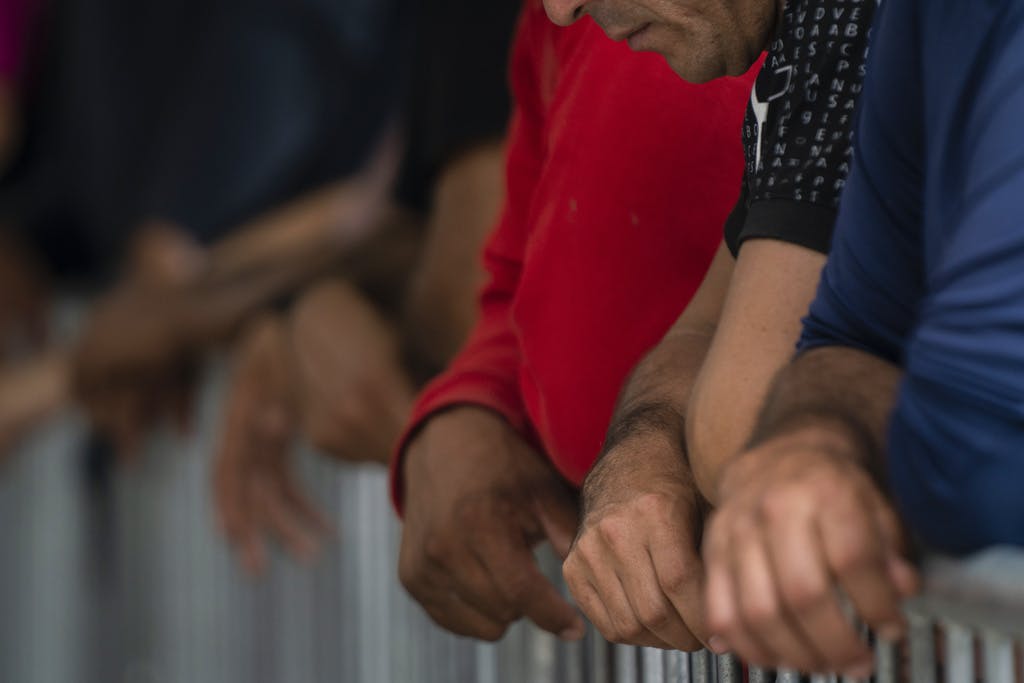At Least 150,000 Migrants Massed on Mexican Side of Border Awaiting a Chance To Enter America
In 20 years of living in Ciudad Juarez, the director of one shelter for migrants says he has never seen the city as crowded as it has been this week.

As the end of the Title 42 era nears, Mexican towns south of the border are struggling to cope with migrants crowding the streets in the hope of gaining access to America.
According to migrant shelter employees in Mexico’s Chihuahua state, migrants are rushing to the border, seeking an opportunity to cross over before the Trump-era Title 42 is lifted on May 11. A Covid-related public health emergency that underlined the migration-restricting measure expires on that date.
Many migrants hoping to reach the border before Thursday are going days without eating, sleeping, or showering, an employee with a migrant shelter called Uno de Siete Migrando, Dante Gonzalez, tells the Sun. Most of them, he adds, have no concrete plans of action for after they arrive in the promised land.
They want to cross, even if it’s illegal, and get a job in America for as long as they can, Mr. Gonzalez says. “Some migrants have already been deported from America, particularly Venezuelans. They are now disappointed and want to try to re-enter any way they can.”
The director of another migrant shelter, La Tenda di Cristo, Davide Dalla Pozza, tells the Sun that there are migrants “of all sorts.” Some are anxiously waiting for Thursday to come to cross the border, while others are applying for appointments at ports of entry via Customs and Border Protection-issued applications known as CBPOne.
In 20 years of living in Ciudad Juarez, Mr. Dalla Pozza has never seen the city as crowded as it has been this week. “I walk past the border every morning on my way to work,” he says. “There are migrants lined up until the very south point of the city. The line is getting longer.”
Two camps were set up by migrants from different nationalities in Ciudad Juarez, according to local news reports. Some migrants spend more than eight days sleeping outside while they ration food and water to ensure they don’t lose a spot in the line. The local municipality is campaigning to relocate to shelters migrants who are camping at the border.
Under Title 42, many migrants arriving at the border were blocked from requesting asylum. With it lifted, the U.S. will return to a policy under which migrants are screened to determine the validity of their asylum applications and only deported if it is determined they do not qualify.
The federal government estimates that more than 150,000 migrants are crowding Mexican border cities, CNN reported. One-third of them are in Chihuahua, which is currently giving refuge to 60,000 migrants. About 35,000 are in Tamaulipas and 25,000 are in Coahuila. Mr. Gonzalez, though, suspects the number of unregistered migrants at the Mexican side of the border is much higher.
American Customs and Border Protection encountered more than 2.7 million migrants at the border last year, a record number and a 41 percent increase from 2021. Consequently, the Biden administration’s decision to lift Title 42, enacted by President Trump in 2020 at the height of the pandemic, was widely criticized.
The Department of Homeland Security announced guidelines that seek to control the influx of migrants after Title 42 ends, including a transition back to Title 8, a long-established policy that allows the government to remove anyone who is unable to establish a legal basis for entry.
Under Title 8, Customs and Border Protection is able to use a process that can result in migrants being denied entry and removed from the country, known as Expedited Removal. Those deported will be barred from entering America for at least five years.
To avoid this, the government is encouraging migrants to enter through a legal pathway. Migrants can apply via the government-issued CBPOne to appear at a port of entry legally. Nationals from El Salvador, Guatemala, Honduras, Cuba, Haiti, and Colombia also can apply via family reunification parole processes.
On Friday, the homeland security secretary, Alejandro Mayorkas, warned migrants traveling to the border: “The border is not open, it has not been open, and it will not be open subsequent to May 11.”
Yet, migrant shelter employees on both sides of the border say there is a lot of disinformation flowing around. When migrants hear that there is an open port or an easy way across, they attempt to try it out themselves but end up being deported. “They will grab onto any positive thing they hear,” Mr. Dalla Pozza says. There is also a sense of hope, he adds.

